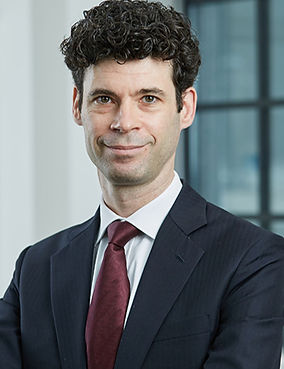
About me
With over 20 years’ experience as a commercial litigator, I have helped clients navigate and resolve complex, high-stakes disputes in numerous different contexts. My deep interest in conflict and communication has shaped my approach: understanding not just how disputes arise, but why they escalate, why parties choose to settle or go to trial, and why litigation often fails to deliver a solution. I have seen how mediation can make the difference in the most intractable cases.
I was part of the founding team from Manches that launched the commercial litigation department at Stewarts in 2009. Stewarts quickly became the UK’s leading litigation-only firm, and I became a partner there in 2013. In 2017, I established a new commercial litigation department at Jury O’Shea.
I was accredited as a mediator by CEDR in 2025.
You can see examples of the types of cases I have worked on here.

Mediation
Mediation provides a confidential space for straight speaking away from the turmoil and posturing of litigation. Unlike litigation, which can be slow, expensive, backwards-looking and unpredictable, mediation puts parties in control and allows scope for solutions beyond those the courts can impose.
The mediator acts as a neutral facilitator, tailoring the process to suit the parties and the nature of the dispute. All communications with the mediator are confidential and the mediator will only share information with the other side if authorised to do so. Information exchanged in a mediation is privileged, so nothing the parties say can be used against them in litigation.
The mediation process is flexible, but a typical mediation will run along the following lines:
Pre-Mediation: The mediator meets each party by phone or video call to explain the process and gain an understanding of the dispute. Parties exchange position statements and provide key documents to the mediator. They might also provide a confidential briefing for the mediator’s eyes only.
Mediation Day: The day typically begins with the mediator meeting the parties individually, followed by a joint opening session where each side can present its position. If constructive, this session may evolve into a chaired negotiation.
After the joint session, the parties move into separate rooms for private sessions. The mediator moves between the rooms, exploring each party’s position, testing assumptions, coaching and facilitating communication to help the parties towards a resolution. The mediator might arrange further joint sessions between some or all of the parties during the day.
Settlement: If a settlement is reached (and most mediations do result in settlement), it will only be binding once documented and signed by all parties.
Experience
I have extensive experience in resolving complex, high-value disputes, often with a multi-jurisdictional dimension. My work spans a wide range of sectors and legal issues, including:
Professional & Commercial Disputes
-
Professional negligence claims (against lawyers, accountants, architects, and medical professionals)
-
Shareholder, partnership, and LLP disputes
-
Banking disputes
-
Contractual disputes across diverse business sectors
-
Misrepresentation claims
-
Breach of warranty claims
-
Loan and guarantee disputes
-
IT services and technology-related disputes
-
Insurance coverage and liability disputes
Fraud, Insolvency & Asset Recovery
-
Complex fraud and asset-tracing involving multiple parties and jurisdictions
-
Claims involving administrators and liquidators
-
Section 423 Insolvency Act claims
-
Post-judgment enforcement and recovery
-
Interim relief applications (including freezing injunctions and search orders)
Private Client & Fiduciary Disputes
-
Family wealth and inheritance disputes
-
Breach of trust and breach of confidence claims
-
Disputes involving referral fees and fiduciary duties
Regulatory & Other Matters
-
Financial Services Disputes
-
Domestic and international arbitrations
-
Trading standards prosecutions
-
Discrimination claims

